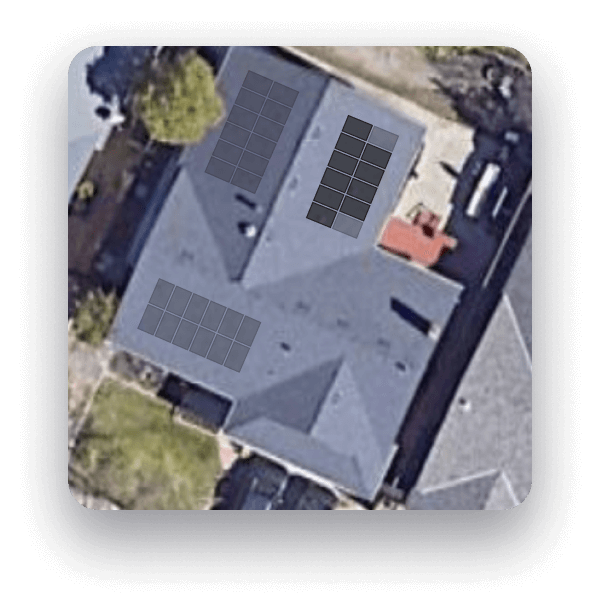Here's an overview of what this solar system size might cost for your home.
Utility rates are rising and becoming a major factor in the decision to go solar for homeowners with large properties. Whether you’re looking to reduce your carbon footprint, save on utility bills, or want alternative energy solutions, the demand for solar power is growing.
But choosing the right solar system isn’t always a one-size-fits-all solution. From property size to energy usage, the type of system that fits needs and lifestyles varies between homeowners.
While there are different systems to choose from, those with a high demand for power and expansive footprints will typically look at a 12kW solar system.

Cost of a 12kW Solar System
Switching to solar energy can be particularly advantageous in areas with higher utility costs and aging power infrastructure. For example, the average residential electricity rate in Virginia is 14 cents per kilowatt-hour, while in Nevada, it’s 17 cents per kilowatt-hour.
Since utility bills and energy consumption depend on your household’s appliances and activities, choosing a system that accommodates demand offers the most benefit in going solar. For example, a large home with electric vehicles will consume more power than a single-family home and gas-powered cars, and in a state with expensive utility rates, costs add up quickly.
That’s where a 12kW solar system makes sense over a 10kW system. For a system of this size, average costs before tax credits and financial incentives is approximately $34,200.
Considering the 30% solar tax credit (in addition to annual savings on utility bills), homeowners can expect to pay roughly $24,000 for a 12kW solar system.

Other factors can impact the cost of a 12kW solar system, including:
Solar Incentives and Rebates
State and local governments offer various incentives, rebates, and tax credits to encourage solar adoption. States with more generous incentives typically have lower overall costs for solar installations. These incentives can reduce the initial investment and improve the financial viability of solar power.
Electricity Rates
States with higher electricity rates make solar power more financially attractive. When traditional electricity costs are high, the savings from generating your own power with solar panels are greater, enhancing the return on investment.
Sunlight Availability
The amount of sunlight a state receives impacts the efficiency and output of solar panels. States like Arizona and California, with abundant sunshine, generate more solar energy, making solar installations more effective and reducing the cost per kilowatt-hour produced.
Investing in a solar system is a big step for homeowners. How do you know if a 12kW solar system is right for you?

Let’s look at a few scenarios:
Standard Home
The average U.S. household consumes about 10,649 kWh annually. A 12kW system would more than cover this usage, potentially producing excess electricity that can be credited through net metering.
Large Home with High Energy Usage
Large homes that use appliances, heating/cooling systems, and electronics extensively may use between 15,000 and 20,000 kWh per year. For these homes, a 12kW system can match or slightly exceed their annual energy consumption, leading to significant savings on utility bills.
Home with Electric Vehicles
A household with one or two electric vehicles (EVs) may consume an additional 4,000 to 6,000 kWh annually per vehicle, bringing total household usage to around 14,000 to 22,000 kWh per year. A 12kW system can cover most or all of this increased demand, making it a good fit for homes with EVs.

State-by-State Cost Analysis
With rising utility rates, solar power offers potential savings on utility bills and a reduction of carbon footprints, making it a great alternative.
The cost of a 12kW system varies by state due to factors like solar incentives, electricity rates, and sunlight availability. Still, financial incentives such as the 30% solar tax credit make the investment even more appealing.
By assessing your household’s specific energy consumption and regional factors, you can determine if a 12kW solar system is the right fit to maximize your energy efficiency and cost savings.
Below are a few examples of what a 12 kW solar system will cost in different US states. It’s worth mentioning that with Monalee, we’re able to offer solar at up to 50% less than what traditional solar companies charge.


























